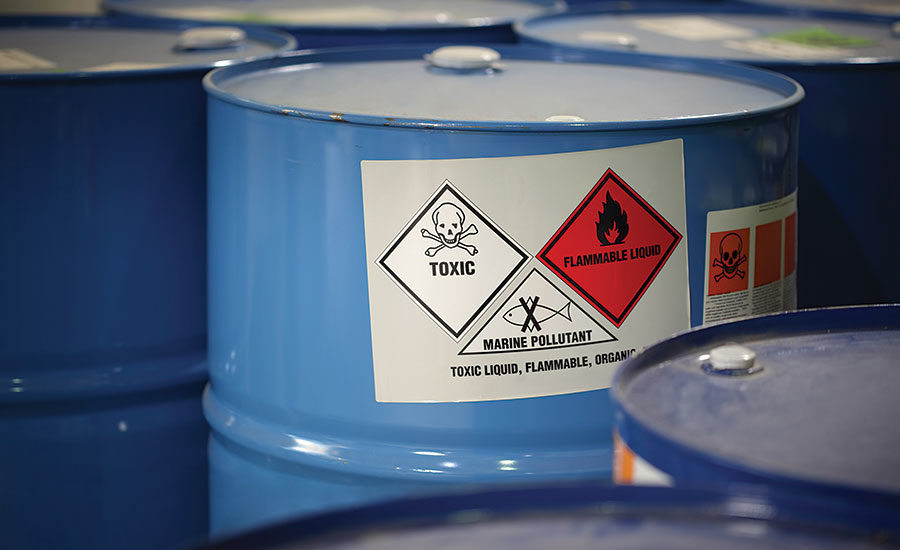OSHA’s Hazardous Waste Operations and Emergency Response (HAZWOPER 29 CFR 1910.120, 1926.65, EPA 40 CFR 311), aims at preventing or minimizing worker exposure to hazards during operations and emergency response to unplanned events such as releases or spills. It mandates training for various categories of workers including the First Responder. First Responder is a person who is among the first ones to appear at the scene of a release event. The First Responder could be ANY worker at the facility, including operations, maintenance, contractors, and office workers including, for example, IT, HR and accounting group. The central reasoning behind requiring training for the First Responder is that with appropriate training he/she (First Responder) can QUICKLY relay crucial information about the release event to the HAZOWOPER team. With that information, the team can swiftly deploy appropriate equipment and respond to the event. The thrust of the response is to take SAFE AND QUICK action so that the release event can be prevented from turning into a major consequence. HAZWOPER requires the regulated entities to have systems and trained people in place so that any release event can be contained safety and quickly.
Beyond regulatory compliance with HAZWOPER, there are practical considerations as well: Events if not arrested quickly lead to major consequence in terms of loss of life, environmental degradation, tarnished image of your company, and potential litigation. Almost after each major incident companies have faced litigations which put heavy stress on company resources. Still, ALL companies have the central goal to protect workers and environment.
HAZWOPER classifies First Responder into two categories:
- First Responder Awareness Level: The responder notifies the Emergency Response Team (ERT) with relevant information about the release event. Awareness level worker is not authorized to touch or handle process equipment. Typically, training is four hours annually.
- First Responder Operations Level: The responder not only notifies the ERT with crucial information, she/he can take appropriate actions such as closing the valve or barricading the spill, if it is SAFE to do so. Typically, training is eight hours annually.
Many safety professionals including this author have observed the following about training:
Training is mistaken as one-time activity. Training and reinforcement of training should be an ongoing process. Implicit in HAZWOPER is the notion that HAZWOPER training is a continuing process.
Training for the First Responders tends to get mired in “weeds.” This tends to miss the core objective--- quick detection of hazard and appropriate initial mitigative actions ONLY if safe to do so.
The author has found the following five-step system as an effective way to train First Responders and accomplish regulatory compliance. Beyond that, in author’s opinion, it will help create a positive safety culture.
Arrange periodic plant tours for the potential First Responders: First responders (Awareness level) are generally not familiar with hazards present in plant operations or maintenance, and as a result they may put themselves in harms way. For example, out of curiosity, they may enter a confined space — not knowing a permit is required for entry. In addition, it would be imprudent to expect that they know even basic rudiments of process equipment. Several years ago, the author gave a short tour to account executives. As the group was passing by a flare (the flare looked like a Saturn Rocket), one executive asked: This is a nice shuttle, do you fly space missions from here? The executive was not joking — simply, he was curious. The author briefly explained the purpose of the flare. The point is that periodic tours will help them recognize plant operations and potential hazards.
Develop plot plans that show major equipment, chemical storage, and hazards: Plot plans provide a bird’s eye-view of the major equipment and hazards at your plant site. Plot plans can be used in conjunction with plant tours. The key crucial point to keep in mind in developing a plot plan is that focus should be on MAJOR equipment and hazards. Avoid peripheral details. For example, a large gas compressor for, say methane gas, will typically include numerous support systems such as knock out drums, lube oil system, cooling systems and others. Major hazard of this compressor is potential fire or an explosion. The plot plan should show the compressor and state the major hazard—but leave out smaller systems. Here again, the key objective is to familiarize Awareness workers with the BASIC equipment and hazards. Intent is not to bog down in other details which can distract the would-be First Responders.
Avoid or minimize technical jargon
The key to HAZWOPER training is: How well the First Responder learns to identify hazards quickly—and NOT how good he/she gets with complex terminology. On the other hand, some terminology could be crucial in hazard identification and communication (by a First Responder to the ERT) in the event of a hazardous release. The terminology you want to keep or avoid depends on the plant and type of hazards involved.
Some examples to consider
Terms including Auto Ignition Temperature (AIT), PEL (Permissible Exposure Level), STEL (Short term Exposure Level),and several other similar terms can be de-emphasized during the training.
On the other hand, other terms such as LEL (Lower Explosive Limit), UEL (Upper Explosive Limit), Carcinogen, Respiratory Hazard, Acute and Chronic effects may be included and explained in practical terms during the training. Give plenty of examples and especially examples which help identify specific hazards at your plant.
Tools including, for example, OSHA’s 9 hazard classes with corresponding diamond symbols, ERG (Emergency Response Guide), SDS (Safety Data Sheets), and other resources may be used. Visual, Audio, and Olfactory means of hazard recognition would help enhance hazard identification process. For example, bulge in a drum, unusual noise from a pump or a compressor, grinding sound of gears, smoke, odor, rattling sounds from a pipe (possible water hammer) may be helpful in hazard recognition process.
Contractors
Contractors on occasional assignment at your plant present a serious risk in the event of a release. Contractors — occasional, short-term long-term ALL should be trained in hazard recognition process at your plant. Best In Class (BIC) companies implement careful screening of contractors so that they have robust safety and training program at their site. Safety professionals visit and audit potential contractor sites to ensure only the contactors that meet their company’s safety criteria are considered for contract work. Contract workers should have prior HAZWOPER training. They should be trained in hazard recognition and communication at your plant.
Group interaction
Would-be First Responders (Awareness) interacting with plant personnel will enhance their appreciation of hazards and way to minimize exposure to those hazards. The focus of the interaction should be imparting a high-level understanding of the plant operations to the First Responder Awareness workers. An important side benefit of this interaction would be team spirit and openness.
At the first glance, it may seem that cost to do these steps may be prohibitively high. However, author’s experience shows otherwise. Investment in training will help you minimize many release events from becoming unmanageable. Judiciously used training resources, will yield high ROI: Return on Investment. Openness, trust, and team spirit will yield significant benefits!







